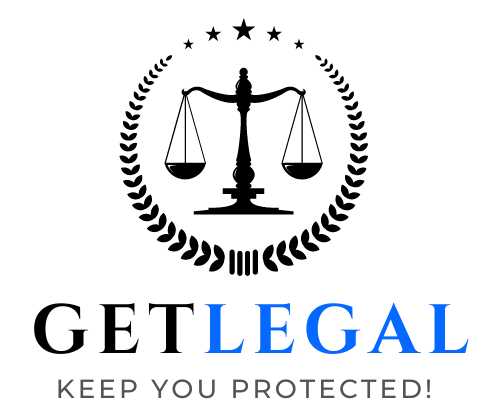
The fashion industry, long celebrated for its creativity and innovation, now faces a pivotal crossroads. As consumers grow increasingly conscious of their purchasing power, ethical fashion and legal implications have surged to the forefront of global discourse. This transformative movement isn’t merely about aesthetics; it’s a profound reimagining of how garments are produced, marketed, and regulated. From supply chain transparency to labor rights, the interplay between morality and legality is reshaping the sartorial landscape.
Understanding Ethical Fashion: Beyond Trends
Ethical fashion transcends fleeting trends, embedding itself in principles of equity, sustainability, and accountability. It challenges the traditional fast-fashion paradigm, which often prioritizes profit over planetary and human well-being. At its core, this philosophy demands fair wages, safe working conditions, and environmentally responsible practices. Brands embracing ethical fashion often adopt circular models—think upcycled materials, zero-waste production, and carbon-neutral logistics.
Yet, the rise of ethical fashion isn’t solely a moral victory. It’s increasingly intertwined with legal frameworks designed to hold corporations accountable. Governments and regulatory bodies are crafting legislation to combat greenwashing, enforce supply chain disclosures, and penalize labor violations. This symbiosis between ethics and law is forging a new era of corporate responsibility.
The Legal Landscape: From Compliance to Accountability
The legal implications of ethical fashion are vast and multifaceted. Consider the European Union’s Corporate Sustainability Reporting Directive (CSRD), which mandates detailed environmental and social disclosures from large companies. Similarly, California’s Transparency in Supply Chains Act requires businesses to publicly address efforts to eradicate slavery and human trafficking. These laws aren’t mere bureaucratic hurdles; they’re catalysts for systemic change.
One critical area of focus is greenwashing—a deceptive practice where brands exaggerate their sustainability credentials. Regulatory agencies, such as the U.S. Federal Trade Commission, have tightened guidelines to prevent misleading claims. For instance, a company labeling a product “eco-friendly” must substantiate this with verifiable data, such as reduced water usage or certified organic materials. Failure to comply can result in hefty fines and reputational damage.
Labor rights also occupy center stage. The 2013 Rana Plaza collapse in Bangladesh, which killed over 1,100 garment workers, exposed the dire consequences of lax regulations. In response, nations have strengthened occupational safety laws and expanded protections for vulnerable workers. The UK Modern Slavery Act (2015) compels companies to publish annual statements outlining actions taken to prevent forced labor, setting a precedent for global accountability.
Certifications and Compliance: Bridging Ethics and Law
Navigating ethical fashion and legal implications often involves adhering to certifications that validate a brand’s commitments. Standards like Fair Trade Certified, Global Organic Textile Standard (GOTS), and B Corp certification serve as both ethical benchmarks and legal safeguards. These labels assure consumers of a product’s integrity while shielding companies from litigation risks.
For example, GOTS certification requires that textiles contain at least 70% organic fibers and prohibits toxic chemicals. Brands leveraging such certifications not only align with ethical fashion principles but also preemptively address regulatory requirements. In contrast, companies ignoring these standards may face lawsuits, consumer boycotts, or sanctions from watchdog organizations.
Case Study: The Rise of Transparent Supply Chains
Take Patagonia, a pioneer in ethical fashion. The company’s “Footprint Chronicles” platform allows customers to trace a product’s journey from raw material to retail. This level of transparency isn’t just a marketing strategy—it’s a legal safeguard. By proactively disclosing supply chain details, Patagonia mitigates risks associated with non-compliance and builds trust in an era of skepticism.
Contrast this with Boohoo, a fast-fashion retailer embroiled in a 2020 scandal over sweatshop-like conditions in its UK factories. The ensuing legal battles and stock price plummet underscored the financial and reputational costs of neglecting ethical fashion and legal implications.
Future Trends: Legislation as a Catalyst for Change
As ethical fashion evolves, so too will its legal underpinnings. Emerging technologies like blockchain promise to revolutionize supply chain transparency, enabling real-time tracking of materials and labor conditions. Meanwhile, proposed laws such as France’s Anti-Waste and Circular Economy Law (AGEC) aim to ban the destruction of unsold goods, pushing brands toward sustainable inventory management.
Consumer activism will further drive legislative action. Social media campaigns and shareholder advocacy are pressuring policymakers to criminalize environmental harm and exploitation. The future of fashion may well hinge on a robust alliance between grassroots movements and governmental rigor.
Conclusion: Weaving Ethics into the Fabric of Law
The intersection of ethical fashion and legal implications is no longer a niche concern—it’s a blueprint for the industry’s survival. Brands that embrace this duality will thrive, fostering loyalty among discerning consumers and staying ahead of regulatory curves. For the rest, the cost of indifference could be existential. As stitches hold fabric together, so must ethics and law unite to clothe the world in conscience and justice.





